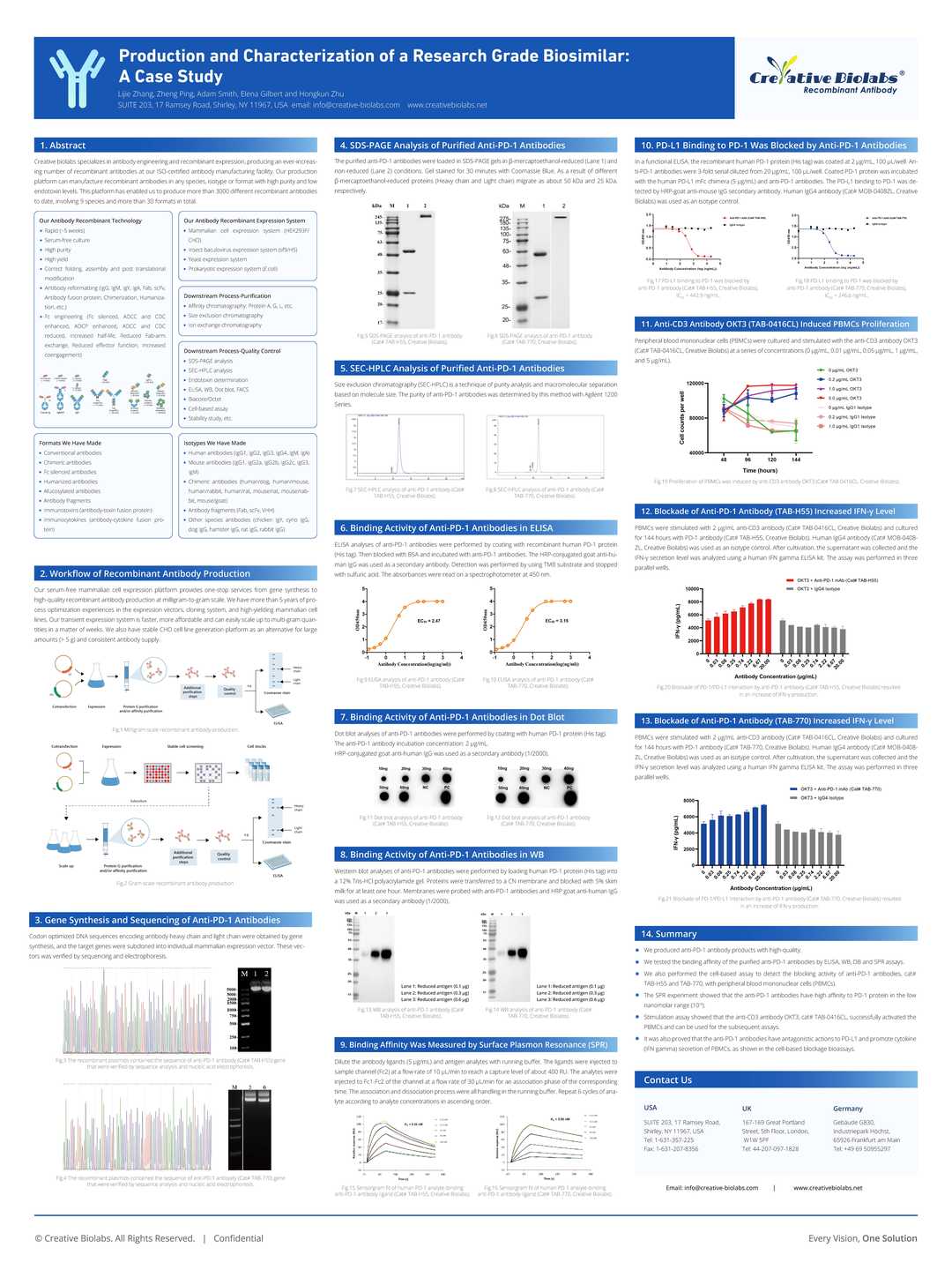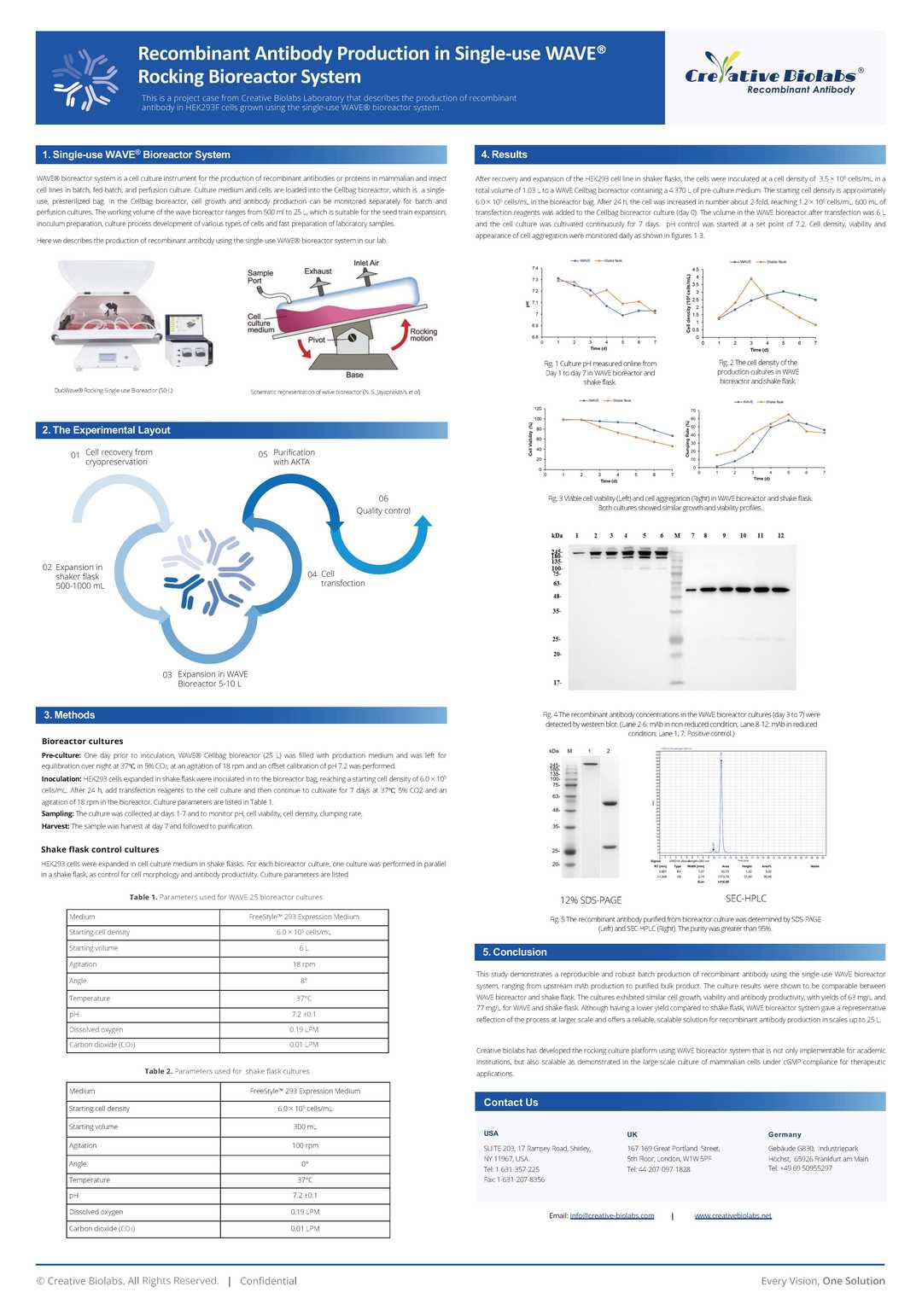Anti-Human Integrin alpha 4 beta 7 Recombinant Antibody (Etrolizumab)
CAT#: TAB-135
Recombinant monoclonal antibody to integrin alpha 4 beta 7. Etrolizumab is a humanized monoclonal antibody designed for the treatment of inflammatory bowel disease.








Specifications
- Immunogen
- The details of the immunogen for this antibody are not available.
- Host Species
- Rat
- Derivation
- Humanized (from rat)
- Type
- IgG1 - kappa
- Specificity
- Tested positive against native human antigen.
- Species Reactivity
- Human
- Applications
- IF, IP, Neut, FuncS, ELISA, FC, ICC, Activ, Cyt
- CAS
- 1044758-60-2
- Generic Name
- Etrolizumab
- UNII
- I2A72G2V3J
- MW
- 144.1 kDa
- Related Disease
- Ulcerative colitis (UC)
Product Property
- Purity
- >95.0% as determined by analysis by RP-HPLC.
- Storage
- At -20°C for one year.
Applications
- Application Notes
- The ITGA4 antibody has been reported in applications of IF, IP, Neut, FuncS, ELISA, FC, ICC, Activ, Cyt.
Target
Customer Review
There are currently no Customer reviews or questions for TAB-135. Click the button above to contact us or submit your feedback about this product.
Cite This Product
To accurately reference this product in your publication, please use the following citation information:
(Creative Biolabs Cat# TAB-135, RRID: AB_3111830)
Submit Your Publication
Published with our product? Submit your paper and receive a 10% discount on your next order! Share your research to earn exclusive rewards.
Biosimilar Overview
Please refer to Etrolizumab Overview to learn more about the mechanism of action, clinical projects, and approved drugs of Etrolizumab.
Downloadable Resources
Download resources about recombinant antibody development and antibody engineering to boost your research.
Product Notes
This is a product of Creative Biolabs' Hi-Affi™ recombinant antibody portfolio, which has several benefits including:
• Increased sensitivity
• Confirmed specificity
• High repeatability
• Excellent batch-to-batch consistency
• Sustainable supply
• Animal-free production
See more details about Hi-Affi™ recombinant antibody benefits.
Datasheet
MSDS
COA
Certificate of Analysis LookupTo download a Certificate of Analysis, please enter a lot number in the search box below. Note: Certificate of Analysis not available for kit components.
Protocol & Troubleshooting
We have outlined the assay protocols, covering reagents, solutions, procedures, and troubleshooting tips for common issues in order to better assist clients in conducting experiments with our products. View the full list of Protocol & Troubleshooting.
See other products for "Etrolizumab"
Afuco™ Anti-ITGA4 ADCC Recombinant Antibody, ADCC Enhanced (AFC-TAB-135)This product is an ADCC enhanced antibody produced by our Afuco™ platform. Recombinant monoclonal antibody to integrin alpha 4 beta 7. It is a humanized monoclonal antibody designed for the treatment of inflammatory bowel disease.
DrugMonitor™ Anti-Etrolizumab Antibody (VS-1224-YC456)Etrolizumab is a humanized IgG1 kappa monoclonal antibody targeting the β7 subunit of gastrointestinal α4β7 and αEβ7 integrins, under investigation for ulcerative colitis and Crohn's disease treatment. The DrugMonitor™ Anti-Etrolizumab Antibody (VS-1224-YC456) is an anti-drug antibody (ADA) against Etrolizumab. This drug-based antibody is raised in mice immunized with the Etrolizumab. The anti-Etrolizumab antibody may be used in ELISA, pharmacokinetics (PK), and pharmacodynamics (PD) analyses, or serves as a reference standard in ADA assays. It also is an excellent tool for therapeutic drug monitoring, allowing to evaluate the drug efficacy and determine the drug concentration of the Etrolizumab in samples.
See other products for "ITGA4"
Select a product category from the dropdown menu below to view related products.
| CAT | Product Name | Application | Type |
|---|---|---|---|
| AGTO-L029G | anti-ITGA4 immunotoxin 15A8 (IgG)-Gel | Cytotoxicity assay, Functional assay |
| CAT | Product Name | Application | Type |
|---|---|---|---|
| PABL-249 | Human Anti-ITGA4 Recombinant Antibody (clone MAb 21.6) | Neut, FuncS | Human IgG |
| PABL-360 | Human Anti-ITGA4 Recombinant Antibody (clone HP1/2) | FC, ELISA, FuncS | Human IgG |
| MOB-1193MZ | Recombinant Mouse Anti-Human ITGA4 Antibody (clone 55I7) | FC, IHC-Fr, IP, WB | Mouse antibody |
| MRO-0848-CN | Recombinant Rabbit Anti-ITGA4 Monoclonal Antibody (JA09-36) | WB, IHC, FC | Rabbit IgG |
| FN-044CQ | Recombinant Mouse Anti-ITGA4 Antibody (BU49) | FC, Block | Mouse IgG1 |
| CAT | Product Name | Application | Type |
|---|---|---|---|
| PSBL-249 | Human Anti-ITGA4 Recombinant Antibody (clone MAb 21.6); scFv Fragment | Neut, FuncS | Human scFv |
| PSBL-360 | Human Anti-ITGA4 Recombinant Antibody (clone HP1/2); scFv Fragment | FC, ELISA, FuncS | Human scFv |
| HPAB-0466-YJ-S(P) | Human Anti-ITGA4 Recombinant Antibody (clone IN9A); scFv Fragment | ELISA, FC, Block | Human scFv |
| HPAB-1588WJ-S(P) | Mouse Anti-ITGA4 Recombinant Antibody; scFv Fragment (clone TA2) | ELISA, WB | Mouse scFv |
| HPAB-1620WJ-S(P) | Mouse Anti-ITGA4 Recombinant Antibody; scFv Fragment (clone HP1 / 2) | ELISA, WB | Mouse scFv |
| CAT | Product Name | Application | Type |
|---|---|---|---|
| PFBL-249 | Human Anti-ITGA4 Recombinant Antibody (clone MAb 21.6); Fab Fragment | Neut, FuncS | Human Fab |
| PFBL-360 | Human Anti-ITGA4 Recombinant Antibody (clone HP1/2); Fab Fragment | FC, ELISA, FuncS | Human Fab |
| HPAB-0466-YJ-F(E) | Human Anti-ITGA4 Recombinant Antibody (clone IN9A); Fab Fragment | ELISA, FC, Block | Human Fab |
| HPAB-1588WJ-F(E) | Mouse Anti-ITGA4 Recombinant Antibody; Fab Fragment (clone TA2) | ELISA, WB | Mouse Fab |
| HPAB-1620WJ-F(E) | Mouse Anti-ITGA4 Recombinant Antibody; Fab Fragment (clone HP1 / 2) | ELISA, WB | Mouse Fab |
| CAT | Product Name | Application | Type |
|---|---|---|---|
| TAB-717LC | Anti-human ITGA4 Recombinant Antibody (IN 10) (TAB-717LC) | ELISA | Human antibody |
| TAB-717LC-S(P) | Anti-human ITGA4 scFv Fragment (IN 10) | ELISA | Human antibody |
| TAB-717LC-F(E) | Anti-human ITGA4 Fab Fragment (IN 10) | ELISA | Human antibody |
| CAT | Product Name | Application | Type |
|---|---|---|---|
| PABX-122 | Recombinant Mouse Anti-Integrin alpha 4 Antibody (ACT-1) | Neut, FuncS | IgG |
| PABX-122-S (P) | Recombinant Mouse Anti-Integrin alpha 4 Antibody scFv Fragment (ACT-1) | Neut, FuncS | scFv |
| PABX-122-F (E) | Recombinant Mouse Anti-Integrin alpha 4 Antibody Fab Fragment (ACT-1) | Neut, FuncS | Fab |
| CAT | Product Name | Application | Type |
|---|---|---|---|
| NEUT-1549CQ | Recombinant Mouse Anti-ITGA4 Antibody (NEUT-1549CQ) | BL | IgG1 |
| NEUT-1550CQ | Recombinant Rat Anti-Itga4 Antibody (9C10(MFR4.B)) | FC, BL, IHC | IgG2a, κ |
| NEUT-1551CQ | Recombinant Rat Anti-Itga4 Antibody (R1-2) | FC, IP, BL, IHC | IgG2b, κ |
| NEUT-1552CQ | Recombinant Rat Anti-Itga4 Antibody (PS/2) | FC, BL | IgG2b |
| CAT | Product Name | Application | Type |
|---|---|---|---|
| NEUT-1553CQ | Recombinant Rat Anti-Itga4 Antibody (CBL914) | FC, Neut | IgG2a, κ |
| CAT | Product Name | Application | Type |
|---|---|---|---|
| MOR-1873 | Hi-Affi™ Recombinant Rabbit Anti-ITGA4 Monoclonal Antibody (DS1873AB) | ICC, IF, IHC-P, IP, WB | IgG |
| CAT | Product Name | Application | Type |
|---|---|---|---|
| AFC-TAB-135 | Afuco™ Anti-ITGA4 ADCC Recombinant Antibody, ADCC Enhanced (AFC-TAB-135) | IF, IP, Neut, FuncS, ELISA, FC | ADCC enhanced antibody |
| CAT | Product Name | Application | Type |
|---|---|---|---|
| VS-0425-FY55 | Human Anti-ITGA4 scFv-Fc Chimera (VS-0425-FY55) | ELISA | Human IgG4, scFv-Fc |
| CAT | Product Name | Application | Type |
|---|---|---|---|
| VS-0425-YC410 | Recombinant Anti-ITGA4 Vesicular Antibody, EV Displayed (VS-0425-YC410) | ELISA, FC, Neut, Cell-uptake |
| CAT | Product Name | Application | Type |
|---|---|---|---|
| VS-0525-XY3623 | Anti-ITGA4 Immunohistochemistry Kit | IHC | |
| VS-0525-XY3624 | Anti-Mouse ITGA4 Immunohistochemistry Kit | IHC |
Popular Products

Application: Neut, ELISA, IF, IP, FuncS, FC, ICC

Application: WB, ELISA, IP, FC, FuncS, Neut, IF

Application: IP, IF, FuncS, FC, Neut, ELISA, ICC

Application: Neut, ELISA, Inhib, ICC, WB

Application: FuncS, Inhib, IP, ELISA

Application: IHC, ELISA, FC, WB, ADCC, FuncS
-3.jpg)
Application: Neut

Application: Neut, ELISA, IF, IP, FuncS, FC

Application: IF, IP, Neut, FuncS, ELISA, FC

Application: ELISA, FuncS, Neut, IF, WB, EM, Inhib, IHC
-2.png)
Application: WB, ELISA, FuncS

Application: ELISA, Neut, FuncS
For research use only. Not intended for any clinical use. No products from Creative Biolabs may be resold, modified for resale or used to manufacture commercial products without prior written approval from Creative Biolabs.
This site is protected by reCAPTCHA and the Google Privacy Policy and Terms of Service apply.























